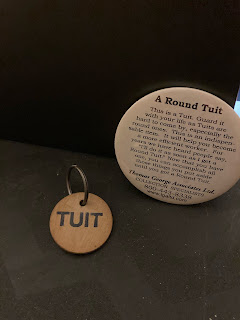Infant mortality was a common occurence among our ancestors. With no modern vaccines, illnesses could affect whole families. How did young parents cope with the death of not just one, but two (or more) children?
_____
Many of my paternal grandmother's family are interred at Old White Cemetery in Oskaloosa, Mahaska County, Iowa. In addition to great-grandma Iowa Hale Speed, her husband William Speed and her brother, Landon Hale, are there. So, too, are her son William Stotts, son of Iowa and her first husband, John Benton Stotts.
William married Myrtle Spencer, daughter of J. W. Spencer and Lizzie Tarr, in 1904 in Oskaloosa. On 23 September of that year they welcomed their firstborn, a son, Joseph. Two years later, they welcomed another son, Charles.
What hopes and dreams they likely had of raising two strapping sons! But it was not to be. Joe died of dysentery July 31, 1906 at the age of 1 year, 10 months, and 7 days. His gravestone is engraved:
Our Joe
1904-1906
Charley died of cholera infantum on 16 August 1907 at the age of 1 year, 3 months and 13 days. Cholera infantum was an often fatal gastrointestinal disorder, often prevalent during summer months. Charley's gravestone reads:
Unfortunately, the person who created the Find A Grave memorial has incorrectly identified Joe and Charley as children of Iowa Hale Stotts Speed and her husband, William Speed, who are buried adjacent to the boys and whose stones are in the same design, likely paid for by William Stotts. I submitted edits for these stones, but as of today they are still linked to the wrong parents.
_______________
My paternal grandfather's family had its share of tragedy. I previously wrote about the death of Grandpa's uncle Charles Herrick, for whom Grandpa was likely named. Grandpa Charles's aunt, Jennie Herrick, and her husband James Osborn Mitchell lived in Canonsburg, Washington County, Pennsylvania. Jennie and James already had two children, Jean and Walter, when the couple welcomed twin sons — James Alexander Mitchell and his twin, William Herrick Mitchell — in mid-February of 1911.
As with Charley Stotts in Iowa four years previously, cholera infantum struck. The twins were 5 months old. William died on 19 July 1911, and James on 23 July. A news item began, "Twice within a week death visited the home of Mr. and Mrs. James O. Mitchell, Highland Avenue, Canonsburg..." It ends by saying "Mrs. Mitchell was formerly Miss Jennie Herrick and she has been nearly prostrated by this double misfortune."
The twins are interred at Oak Spring Cemetery in Canonsburg. The Find A Grave Memorial for James lists him as James O., even though the obituary gives his name as James A., and his death certificate says James Alexander.
_____________
My maternal great-grandparents, Mary Pyterek and Stanislaus Orbik of South Chicago, Illinois, also were no strangers to infant death.
After the births of Mary and Stanley's children, Harry, Eugenia, and Jennie, the couple welcomed a girl, Helen Josephine, in September 1908. Helen died the following August "of pneumonia (probably tubercular)."
The couple had a son, Alfred, in early September 1916. He died of "acute ileocolitis" the day after Christmas.
Both Helen and Alfred are buried at Holy Cross Cemetery in Calumet City, Cook County, Illinois.
_________________
This is a post for Week 9 of Amy Johnson Crow's initiative, #52 Ancestors in 52 Weeks.








-(McCabe).jpg)